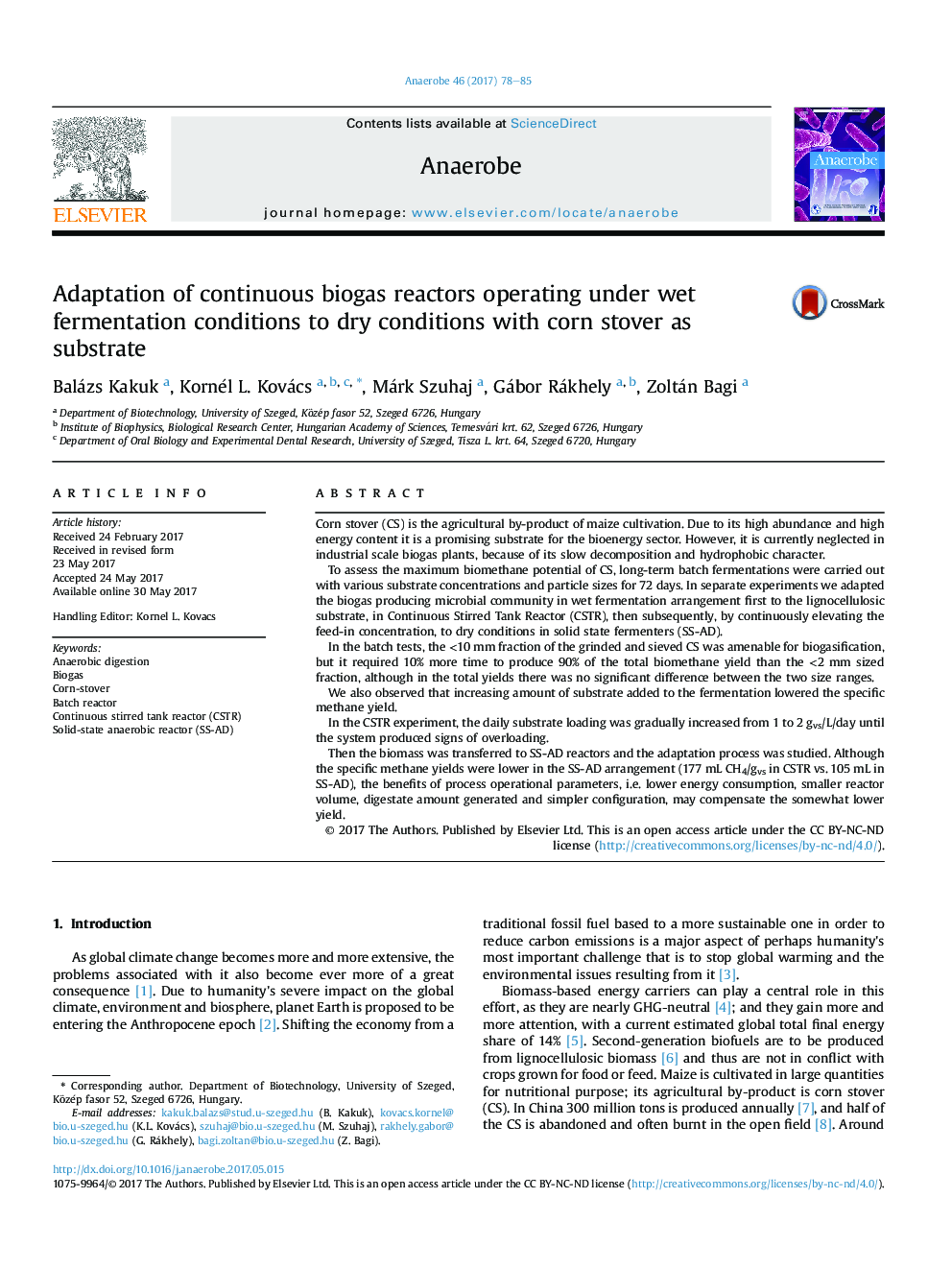| Article ID | Journal | Published Year | Pages | File Type |
|---|---|---|---|---|
| 5671203 | Anaerobe | 2017 | 8 Pages |
â¢Long term batch AD revealed the dynamics of corn stover (CS) degradation.â¢Small CS particles decompose faster but overall do not yield more biogas.â¢CSTR fed batch fermentation can be switched to solid-state AD (SS-AD).â¢Acetate and total acids negatively correlate with methane yields.
Corn stover (CS) is the agricultural by-product of maize cultivation. Due to its high abundance and high energy content it is a promising substrate for the bioenergy sector. However, it is currently neglected in industrial scale biogas plants, because of its slow decomposition and hydrophobic character.To assess the maximum biomethane potential of CS, long-term batch fermentations were carried out with various substrate concentrations and particle sizes for 72 days. In separate experiments we adapted the biogas producing microbial community in wet fermentation arrangement first to the lignocellulosic substrate, in Continuous Stirred Tank Reactor (CSTR), then subsequently, by continuously elevating the feed-in concentration, to dry conditions in solid state fermenters (SS-AD).In the batch tests, the <10Â mm fraction of the grinded and sieved CS was amenable for biogasification, but it required 10% more time to produce 90% of the total biomethane yield than the <2Â mm sized fraction, although in the total yields there was no significant difference between the two size ranges.We also observed that increasing amount of substrate added to the fermentation lowered the specific methane yield.In the CSTR experiment, the daily substrate loading was gradually increased from 1 to 2 gvs/L/day until the system produced signs of overloading.Then the biomass was transferred to SS-AD reactors and the adaptation process was studied. Although the specific methane yields were lower in the SS-AD arrangement (177Â mL CH4/gvs in CSTR vs. 105Â mL in SS-AD), the benefits of process operational parameters, i.e. lower energy consumption, smaller reactor volume, digestate amount generated and simpler configuration, may compensate the somewhat lower yield.
